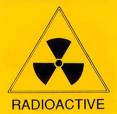Obama Approves Raising Permissible Levels of Nuclear Radiation in Drinking Water. Civilian Cancer Deaths Expected to Skyrocket
Rollback in Nuclear Radiation Cleanup

by Public Employees for Environmental Responsibility (PEER)
The White House has given final approval for dramatically raising permissible radioactive levels in drinking water and soil following “radiological incidents,” such as nuclear power-plant accidents and dirty bombs. The final version, slated for Federal Register publication as soon as today, is a win for the nuclear industry which seeks what its proponents call a “new normal” for radiation exposure among the U.S population, according Public Employees for Environmental Responsibility (PEER).
Issued by the Environmental Protection Agency, the radiation guides (called Protective Action Guides or PAGs) allow cleanup many times more lax than anything EPA has ever before accepted. These guides govern evacuations, shelter-in-place orders, food restrictions and other actions following a wide range of “radiological emergencies.” The Obama administration blocked a version of these PAGs from going into effect during its first days in office. The version given approval late last Friday is substantially similar to those proposed under Bush but duck some of the most controversial aspects:
In soil, the PAGs allow long-term public exposure to radiation in amounts as high as 2,000 millirems. This would, in effect, increase a longstanding 1 in 10,000 person cancer rate to a rate of 1 in 23 persons exposed over a 30-year period;
- In water, the PAGs punt on an exact new standard and EPA “continues to seek input on this.” But the thrust of the PAGs is to give on-site authorities much greater “flexibility” in setting aside established limits; and
- Resolves an internal fight inside EPA between nuclear versus public health specialists in favor of the former. The PAGs are the product of Gina McCarthy, the assistant administrator for air and radiation whose nomination to serve as EPA Administrator is taken up this week by the Senate.
- Despite the years-long internal fight, this is the first public official display of these guides. This takes place as Japan grapples with these same issues in the two years following its Fukushima nuclear disaster.
“This is a public health policy only Dr. Strangelove could embrace. If this typifies the environmental leadership we can expect from Ms. McCarthy, then EPA is in for a long, dirty slog,” stated PEER Executive Director Jeff Ruch, noting that the EPA package lacks a cogent rationale, is largely impenetrable and hinges on a series of euphemistic “weasel words.”
“No compelling justification is offered for increasing the cancer deaths of Americans innocently exposed to corporate miscalculations several hundred-fold.”
Reportedly, the PAGs had been approved last fall but their publication was held until after the presidential election. The rationale for timing their release right before McCarthy’s confirmation hearing is unclear.
Since the PAGs guide agency decision-making and do not formally set standards or repeal statutory requirements, such as the Safe Drinking Water Act and Superfund, they will go into full effect following a short public comment period. Nonetheless, the PAGs will likely determine what actions take place on the ground in the days, weeks, months and, in some cases, years following a radiological emergency.
Copyright Public Employees for Environmental Responsibility (PEER) 2014

